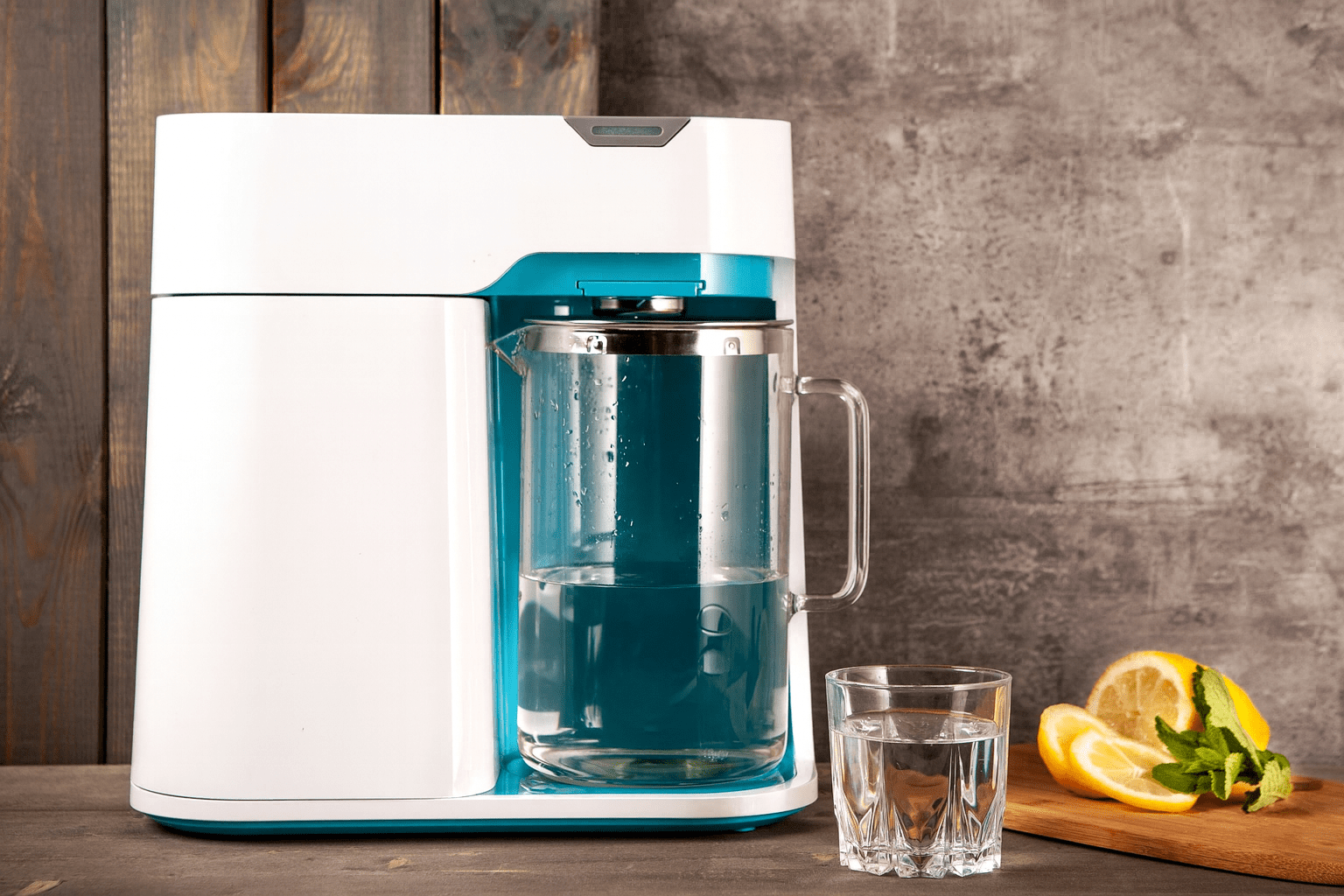When we turn on the faucet, we expect to get clean, safe water. But the truth is that city water might have pollutants in it that we don't want to drink, like heavy metals, microplastics, and new compounds like PFAS. That's why so many people use Reverse Osmosis (RO), which is one of the best and most reliable ways to clean water.

We'll talk about what RO water actually is, how the technology works, what it gets rid of, and how it compares to other ways to filter water in this post. We'll also talk about common worries, practical limits, and what you can do right now to stay healthy.
1. What Is Reverse Osmosis (RO) Water—and How Does It Work?
Reverse osmosis uses science to accomplish something almost counterintuitive. Unlike natural osmosis—where water moves from areas of low solute concentration to high concentration—RO applies pressure to push water through a semipermeable membrane that allows only water molecules to pass.
-
Input: Tap water, typically containing minerals, chemicals, and pollutants
-
Process: Pressure forces water through a dense RO membrane
-
Output: Clean water is collected, while contaminants are flushed away
The result is water that’s clearer, fresher, and far safer than what comes out of the tap.
2. What Does RO Remove—and Why It Matters
RO systems consistently outperform other filtration technologies when it comes to contaminant reduction. They target a broad spectrum of pollutants, including:
-
Inorganic contaminants: Lead, arsenic, fluoride, nitrates
-
Chemicals & dissolved solids: Chlorine, PFAS (“forever chemicals”), microplastics
-
Pathogens: Many bacteria and viruses
-
Taste & odor issues: Chlorine and sulfur compounds
The science backs it up:
-
RO membranes reject 90–99% of PFAS compounds, outperforming nanofiltration (NF) and activated carbon filters.
-
The EPA confirms RO and other high-pressure membranes are among the most effective PFAS removal methods, often exceeding 90% across a wide range.
3. Is RO Water “Too Pure”? The Mineral Content Debate
Critics sometimes argue that RO makes water “too pure” by stripping beneficial minerals. Here’s the truth:
-
Dietary reality: Most calcium, magnesium, and other minerals come from food, not drinking water.
-
Modern systems: Many RO units include a remineralization filter to restore healthy minerals.
-
Risk vs. reward: The tiny loss of trace minerals pales in comparison to the serious risks posed by contaminants like lead, arsenic, or PFAS.
In short, the absence of trace minerals isn’t a health risk—but the presence of pollutants is.
4. Safety, Standards, and Certifications
When evaluating filtration systems, look for NSF/ANSI 58 certification. This standard ensures:
-
Verified contaminant reduction, including PFAS
-
Rigorous testing for performance and durability
-
Peace of mind that your system does what it promises
With so many products on the market, certification is the easiest way to separate reliable systems from questionable ones.
5. The Limitations You Should Know
RO isn’t flawless, and it’s important to understand the tradeoffs:
-
Wastewater: Traditional systems discharge 20–30% of input water as waste, though modern designs are increasingly efficient.
-
Energy & cost: RO requires pressure, so it consumes slightly more energy than gravity-based filters.
-
Maintenance: Filters and membranes need timely replacement to maintain performance.
-
Not absolute perfection: While highly effective, no system removes 100% of all emerging contaminants—regular water testing is still wise.
Even with these considerations, RO remains the gold standard for home water purification.
6. The Health Benefits of RO
For households weighing different filtration technologies, the health case for RO is strong:
-
Reduces exposure to chemicals, carcinogens, and endocrine disruptors
-
Encourages hydration by improving taste and odor
-
Environmentally friendly: Eliminates the need for bottled water
-
Cost-effective: Especially for families who drink several gallons per week
When it comes to long-term wellness, RO provides both peace of mind and practical savings.
7. What You Can Do Now
Taking action doesn’t have to be complicated. Here are a few practical steps:
-
Test your water: Identify PFAS, heavy metals, or other local contaminants.
-
Choose certified systems: Look for NSF/ANSI 58 for proven performance.
-
Add remineralization if desired: Many systems now offer this option.
-
Stay on schedule: Replace filters and test water periodically.
-
Support community efforts: Advocate for stronger water quality standards at the municipal level.
Final Thoughts
There is no perfect filtration system, but reverse osmosis is one of the most reliable and scientifically proven choices available today. It gives you clean, safe water, lowers your risk of coming into contact with harmful substances, and replaces bottled water with a long-lasting, affordable option.
People are growing more aware of PFAS, heavy metals, and other toxins, so RO is no longer just a convenience; it's becoming a need. You may be sure that every glass of water you drink is good for your health, your family's health, and your peace of mind if you take care of your RO system.
We at Filter United think you should have that peace of mind, one glass at a time.





